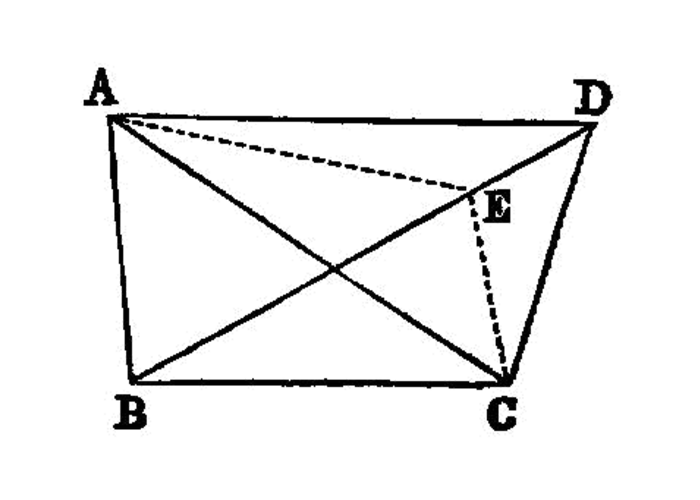Proposition I.39

Equal triangles which are on the same base and on the same side are also in the same parallels.
Let ABC, DBC be equal triangles which are on the same base BC and on the same side of it; [I say that they are also in the same parallels.] 1
And [For] let AD be joined; I say that AD is parallel to BC.
For, if not, let AE be drawn through the point A parallel to the straight line BC, I.31 and let EC be joined.
Therefore the triangle ABC is equal to the triangle EBC; for it is on the same base BC with it and in the same parallels. I.37
But ABC is equal to DBC;
- therefore
DBCis also equal toEBC, I.c.n.1 the greater to the less: which is impossible.
Therefore AE is not parallel to BC.
Similarly we can prove that neither is any other straight line except AD;
- therefore
ADis parallel toBC.
Therefore etc.
- Q. E. D.
References
Footnotes
-
[I say that they are also in the same parallels.]
Heiberg has proved (Hermes , XXXVIII., 1903, p. 50) from a recently discovered papyrus-fragment (Fayūm towns and their papyri , p. 96, No. IX.) that these words are an interpolation by some one who did not observe that the wordsAnd let
are part of the setting-out (ADbe joinedἔκθεσις ), but took them as belonging to the construction (κατασκευή ) and consequently thought that aδιορισμός ordefinition
(of the thing to be proved) should precede. The interpolator then alteredAnd
intoFor
in the next sentence. ↩
